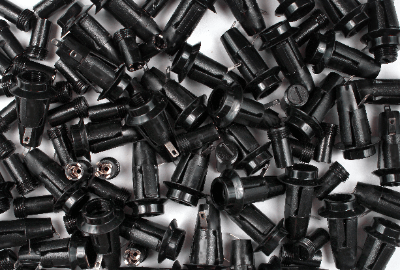What Is a Fuse Holder?

A fuse holder is a device used to attach a fuse to an electrical circuit.
It consists of a clamp for fixing and a terminal for connection to the electric circuit. They are designed to allow easy replacement of fuses.
Fuses are used to prevent equipment failure due to overcurrent. Fuses are suitable for different materials and blending conditions, and are selected according to the situation.
Uses of Fuse Holders
Fuse holders are widely used to improve the protection of electrical circuits. The following are examples of fuse holder applications:
- Televisions and other home appliances.
- Household or industrial lighting fixtures.
- Automotive audio and ETC in-vehicle devices.
Many home appliances also use fuse holders, which ensure safety by blowing a fuse to protect the electrical circuit in the event of a malfunction. Fuse holders are also widely used in automotive products to protect the vehicle’s electrical circuits, often in LED lights and high-precision electronic circuit boards.
Principle of Fuse Holders
The principle of fuse holders is closely related to that of fuses. Fuses are in a low resistance state to energize a circuit under normal conditions. However, if the current becomes abnormally high, thermal expansion of the fuse can cause it to blow, interrupting the circuit.
Fuse holders are devices used to secure these fuses to the circuit. It has a clamp for attaching the fuse and a terminal for connecting the electrical circuit.
The fuse is inserted into the fuse holder connected to the circuit. There are a variety of fuse holders available, and the size is selected according to the size of the fuse.
Types of Fuse Holders
There are various types of fuse holders for different situations. The following are examples of fuse holder types:
1. Panel Mount
Panel-mount fuse holders are used by attaching them to the panel. The panel-mount-type is generally fixed to the panel by drilling holes, and the fuse inserted. There are various types of panel-mounted fuse holders available, including those with mounting screws and those that are secured to the panel with clips.
2. In-Line Fuses
These fuse holders are used directly in electrical circuits. There are a variety of line-ups, such as types that inserts a fuse and types that can be turned on and off like a switch. Inline types also offer a variety of connection methods such as through-holes and wire leads.
3. Through-Hole
This is a fuse holder with a hole-shaped fuse holder terminal. Since the fuse is installed through a through-hole, the contact area between the fuse and fuse holder is large. Therefore, it has the advantage of low contact resistance and high reliability.
4. Clip Type
This type of fuse holder uses a clip to hold the fuse in place. Instead of inserting the fuse, the clip is opened and the fuse is inserted between the clip and the fuse. The advantage is that the fuse can be easily removed and replaced.
5. Fuse Box
A box-shaped fuse holder for storing fuses. The box for storing fuses and the terminals that connect the fuses to the electrical circuit are integrated. Because they are dustproof and waterproof, they are suitable for outdoor use.
How to Select a Fuse Holder
When selecting a fuse holder, consider the size, type, current rating, and connection method.
1. Size
First, you must select a fuse holder that matches the size of your fuse. Since fuse holders are used to mount fuses, size matching is essential.
2. Type
It is also necessary to select appropriate products from a wide variety of types. Select the correct fuse holder for each type of fuse. If the fuse and holder are mismatched, they cannot be properly introduced into the electrical circuit.
3. Current Rating
Next, select the rated current, choose the appropriate fuse for the current, and install it in the fuse holder.
4. Connection Method
Depending on the type of wiring to be connected to the terminal part of the fuse holder, select a fuse holder with an appropriate connection method.